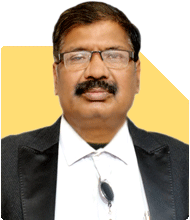Hello sir , I am 40 years old , I have below investment. No EMI No Loan. FD - 60 lacs. Mediclaim - 15 lacs ( 20K per year) NPS - 50K Per year ( Since last 5 years) PPF - 150K Per Year ( Since Last 5 years) I am investing in below mutual funds through SIP. ( 32K Total) - Since last 3 Years ICICI balanced Advantage 2K HDFC Balanced Advantage 3K Tata Midcap and Largecap 3K Nippon India Small Cap 2K Motilal Midcap 2K ICICI Prudential Commodities 5K Quant Small Cap 5K HDFC Top 100 5K Parag Parikh Flexi 5K Is it good funds for long terms ( Horizon of 8/10 years) ? My income is arround 1.80 lac monthly , no home loan and emi. Shall I increase my SIP and my concern is 60 lacs is in FD ..Please suggest.
Plus I want to invest 3 lacs lumpsum. Where to invest ? For long term 5/10 years.
Ans: At 40, your financial position is solid. You have Rs. 60 lakh in fixed deposits (FDs), a Rs. 15 lakh mediclaim policy, and regular contributions to NPS and PPF. Your SIP investments of Rs. 32,000 monthly across various funds, combined with no loans or EMIs, give you a robust foundation.
Let’s evaluate each aspect of your investments in detail, with suggestions for enhancing your portfolio for long-term wealth creation.
Fixed Deposit Concerns
FD Returns: Fixed deposits offer safety but low returns. The returns barely beat inflation, leading to a gradual erosion of purchasing power.
Action: You should not have Rs. 60 lakh tied up in FDs if you aim for long-term growth. Consider moving part of this into more growth-oriented avenues like mutual funds.
Mutual Fund Portfolio Review
You are investing Rs. 32,000 monthly in SIPs across various mutual funds. Let's evaluate if these funds are aligned with your 8-10 year goal.
Balanced Advantage Funds
ICICI Balanced Advantage (Rs. 2,000)
HDFC Balanced Advantage (Rs. 3,000)
Balanced advantage funds provide a blend of equity and debt. These funds adjust allocation based on market conditions. Over a long-term horizon of 8-10 years, they offer moderate growth with reduced risk compared to pure equity funds. Since you are investing for a medium to long-term horizon, continuing these SIPs is reasonable.
Midcap and Small Cap Funds
Tata Midcap and Largecap (Rs. 3,000)
Motilal Oswal Midcap (Rs. 2,000)
Quant Small Cap (Rs. 5,000)
Nippon India Small Cap (Rs. 2,000)
These funds can deliver higher growth but are volatile. For an 8-10 year horizon, midcap and small cap funds have great potential. Your investment mix here is well-diversified. Keep in mind that small-cap funds carry high risk in the short term, but since you are focused on the long-term, you can ride out the volatility for higher returns.
Large Cap Funds
HDFC Top 100 (Rs. 5,000)
Large-cap funds are stable and provide moderate growth. HDFC Top 100, being in this category, adds stability to your portfolio. It ensures that your portfolio is not overly exposed to market fluctuations. You should continue this SIP for balanced growth.
Sectoral and Commodities Funds
ICICI Prudential Commodities (Rs. 5,000)
Commodity funds are highly cyclical. While they can offer high returns during certain periods, they are also risky and volatile. Over the long term, they might not deliver as consistently as diversified equity funds. You should consider reducing your allocation here and channeling this money into more diversified equity funds, which provide a balanced risk-return profile.
Flexi-Cap Funds
Parag Parikh Flexi Cap (Rs. 5,000)
Flexi-cap funds are highly flexible, as they invest across large, mid, and small-cap stocks. Parag Parikh Flexi Cap is known for its consistent performance and global diversification. It's a good choice for a long-term horizon.
Recommendations for Portfolio Improvement
Reduce FD Exposure: Move a portion of your Rs. 60 lakh in FDs into a diversified equity mutual fund. Aim to keep only a small portion in FDs for emergencies.
Maintain Balanced Advantage Funds: Continue with your balanced advantage funds. They provide a safety cushion during volatile times.
Review Sectoral/Commodities Funds: Consider reducing your investment in commodities. Instead, focus on flexi-cap or mid-cap funds for balanced risk and return.
Increase SIPs for Long-Term Growth
Given your healthy monthly income of Rs. 1.80 lakh and no EMIs, you can consider increasing your SIPs to Rs. 40,000 or Rs. 50,000 monthly. This will help you accelerate wealth creation over your 8-10 year horizon.
Focus on Flexi-Cap Funds: Increase your investment in flexi-cap and midcap funds, as they offer higher growth potential.
Limit Sector-Specific Funds: Avoid putting more into sector-specific funds like commodities as they can underperform over the long term.
Balanced SIP Distribution: Aim for a portfolio with a good mix of large, mid, and small-cap funds for a balanced risk-return ratio.
Lump-Sum Investment Strategy
You have Rs. 3 lakh available for lump-sum investment. Given your long-term horizon of 5-10 years, consider investing in an equity mutual fund or a balanced advantage fund. Here are a few options to help grow your corpus:
Equity Funds: Opt for a flexi-cap or large and midcap fund. These funds are well-diversified and can offer superior growth over time.
Balanced Advantage Funds: If you prefer a bit of safety while still aiming for growth, you can invest this lump sum in a balanced advantage fund. These funds automatically adjust between equity and debt.
Systematic Transfer Plan (STP): To avoid market timing risk, consider investing this Rs. 3 lakh in a liquid fund and using an STP to gradually move the money into equity funds over the next 6-12 months.
NPS and PPF Contributions
You have been contributing Rs. 1.50 lakh annually to PPF and Rs. 50,000 to NPS. Both of these instruments are good for long-term wealth creation, particularly for retirement planning.
Continue NPS: NPS offers tax benefits and long-term growth. It’s advisable to continue contributing Rs. 50,000 annually. You can also increase the contribution if required.
PPF for Safety: PPF is a safe investment offering tax benefits and stable returns. Continue your Rs. 1.50 lakh annual contribution to PPF. It serves as a low-risk component of your portfolio.
Final Thoughts on Direct Mutual Funds
You mentioned investing through direct funds. While direct funds seem appealing due to lower expense ratios, they lack the benefit of personalized guidance. A Certified Financial Planner (CFP), along with a Mutual Fund Distributor (MFD), can help you manage and rebalance your portfolio efficiently.
Disadvantages of Direct Funds: Without professional guidance, investors may miss critical rebalancing or sectoral changes. A regular plan with an MFD provides you with expert advice, ensuring that your investments align with your long-term goals.
Benefit of Regular Plans: The small additional cost in regular plans ensures that your portfolio is regularly monitored by professionals, making sure you get the best returns.
Final Insights
You are on a strong financial footing with no loans or EMIs, regular SIPs, and a decent FD reserve. However, your FD holdings are too high, and this could slow your wealth creation. Rebalance your portfolio to include more growth-oriented investments.
By increasing your SIPs and allocating your lump-sum investment wisely, you can achieve higher returns over the next 8-10 years. Keep a balance between equity and debt for safety, and consider professional guidance to navigate market changes.
Stay focused on your long-term goals and review your portfolio every 6-12 months to ensure it remains aligned with your objectives.
Best Regards,
K. Ramalingam, MBA, CFP,
Chief Financial Planner,
www.holisticinvestment.in
https://www.youtube.com/@HolisticInvestment























